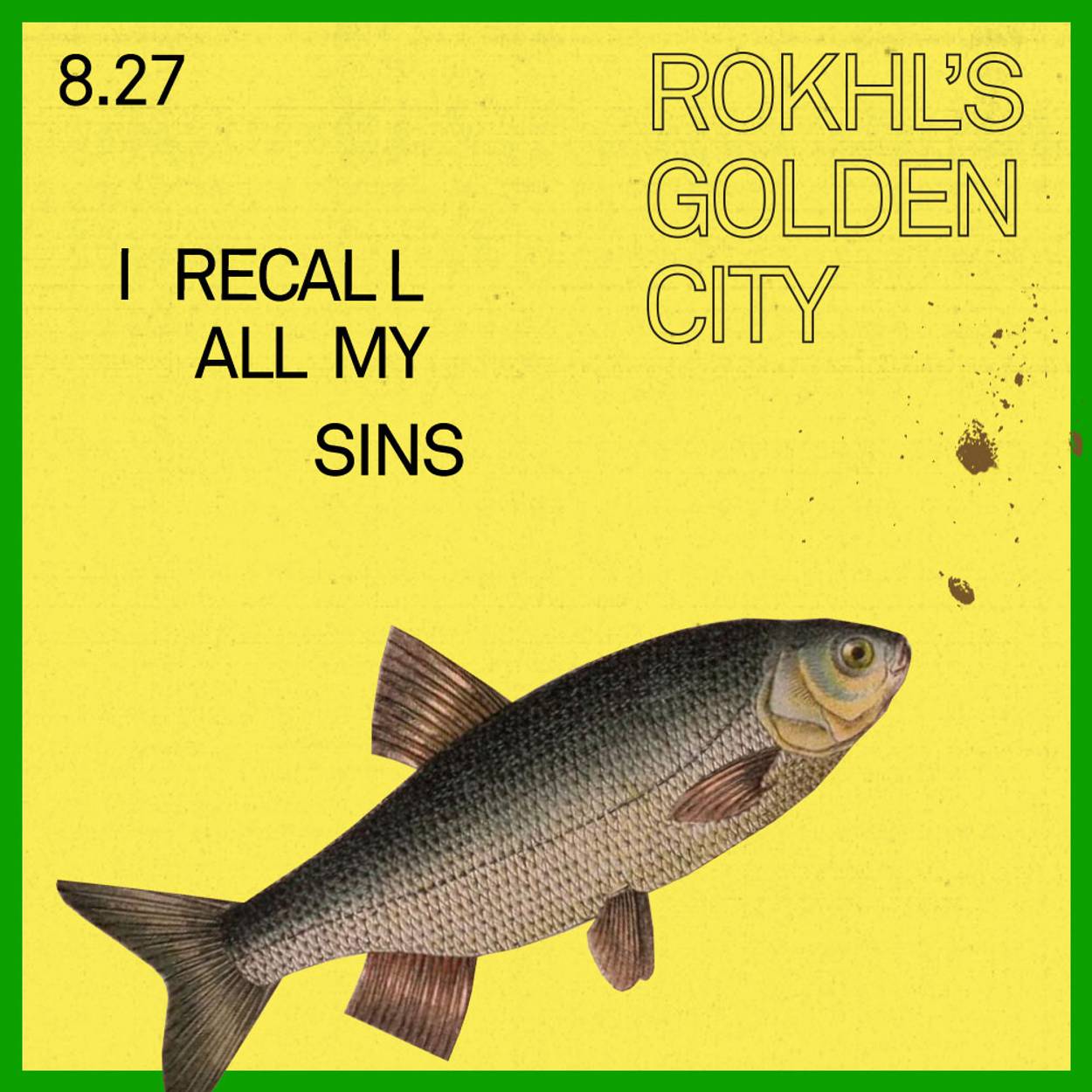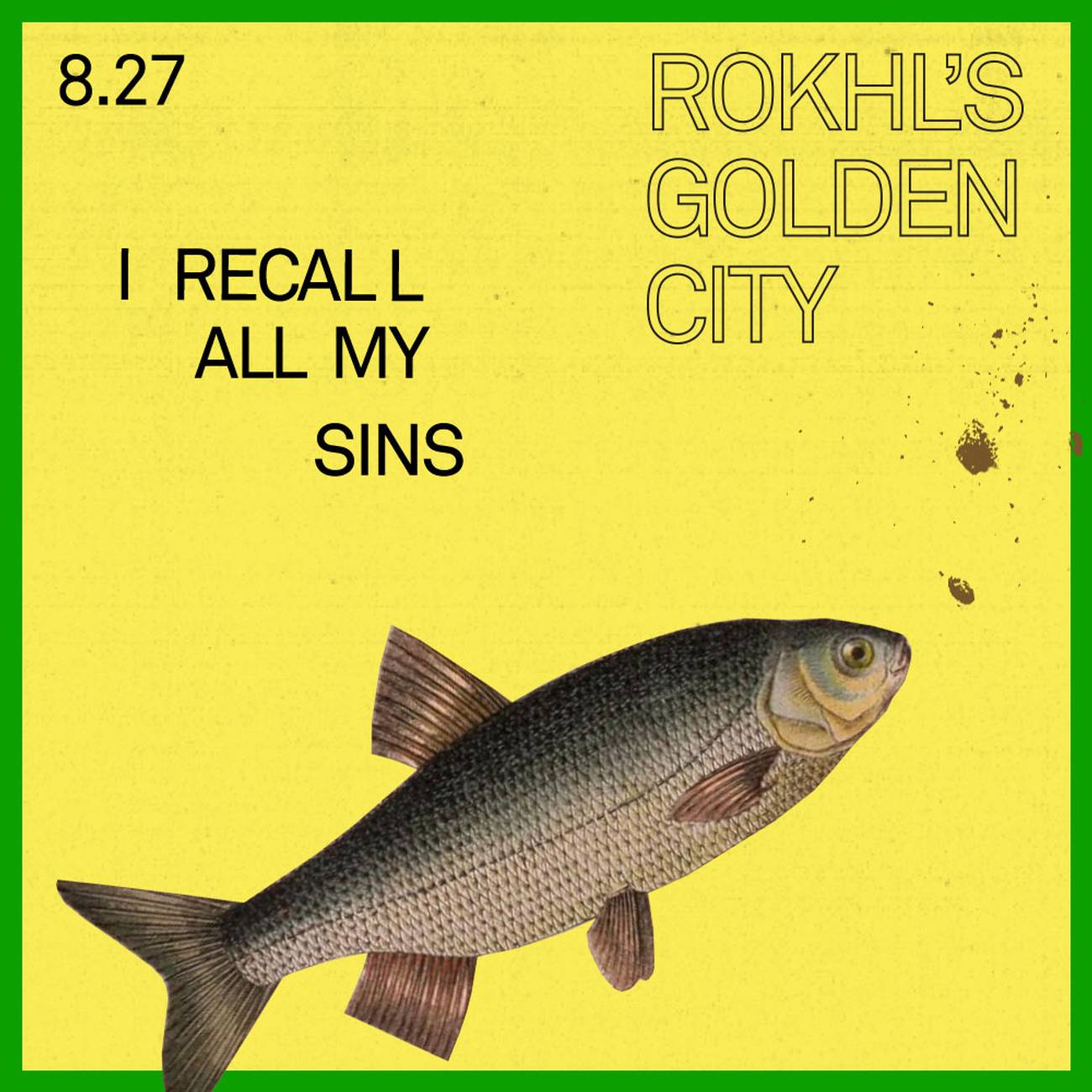The Magic of the High Holidays
Rokhl’s Golden City: Folk religion, tears, and the importance of pockets




Pockets are indispensable. Sometimes, especially around the High Holidays, they’re even magical.
In Bella Chagall’s memoir, Burning Lights, (published in Yiddish in 1945, translated into English the following year),the author describes her turn-of-the-century childhood in Vitebsk. In the chapter on Rosh Hashanah, she describes a fearsome atmosphere, as seen through the eyes of a small girl. When the shofar blows, “I recall all my sins. God knows what will happen to me: so much has accumulated during the year!” Young Bella (or Bashke, as she was known then) accompanies her mother to the riverbank for Tashlikh. She sees the men turn their pockets inside out, “little crumbs, scraps, detach themselves from the linings. But how shall I shake off my sins? I have no crumbs in my pockets—I do not even have pockets.” Bashke must settle for her words as a sin offering, casting them into the river until it is “swollen with all our sins …”
It seems doubly unjust that women are not only deprived of so many rights in traditional Judaism; they were, during Bella Chagall’s time, deprived even of the pockets out of which they might absolve themselves. Even if they weren’t expected in the bes-medresh (study house) or leading the service, Jewish women still had obligations, many of which can be understood as folk religion. When Bashke and her mother return home, her mother immediately busies herself reading tilem (psalms). “A humming fills the dark room. The air becomes clouded, like mother’s spectacles.”
There was a traditional belief that between Rosh Hashanah and Yom Kippur our relatives in the other world could intercede on our behalf, as our fate was being written for the coming year. For Bashke, this connection between the living and dead is quite real: “I fancy that from the closely printed lines of the psalms our grandfathers and grandmothers come gently out to us. Their shadows sway, they draw themselves out like threads, encircle me. I am afraid to turn around. Perhaps someone is standing at my back and wants to seize me in his arms?”
A lot of my peers feel a special kind of ambivalence around this time of year. We want to recapture a connection to our families, feel that warmth of belonging. The shadows of the past emerge, nudging us back to synagogue, sometimes not so gently. But the synagogue isn’t necessarily a place of warmth or belonging. We feel alienated from the language of liturgy, even alienated from communal worship altogether. But. We are mistaken to think that the sum total of these Days of Awe is simply showing up and saying the right words along with everyone else. Awe is about more than repeating formulas of repentance. Just as important are the shadows and tears, the acts of charity and the acts of magical transformation.
How shall I shake off my sins? I have no crumbs in my pockets—I do not even have pockets.
In my own childhood, I possessed a powerful imagination, like young Bella Chagall. As a spiritually noncommittal adult, I struggle at this time of year, every year. But when the synagogue becomes a concert stage, the effect can be magical, even transcendent.
I was talking to my friend Jeremiah Lockwood about his own preparations to lead Rosh Hashanah and Yom Kippur services. He has spent many years now exploring the legacy of his grandfather, the great Cantor Jacob Konigsberg. I asked him to hip me to some of his music, something that would get me, the unspiritually inclined, into something approaching a spiritual mood. In response, he sent me a video of a 2007 Sway Machinery performance at the Angel Orensanz Center for the Arts, on the Lower East Side. Back in 1949, when the space was the Slonimer synagogue, Konigsberg gave his debut concert there. In September 2007, it was there that Lockwood and Sway Machinery presented Hidden Melodies Revealed. That night, Lockwood sang Unesanah Tokef with the melody his grandfather, Cantor Konigsberg, taught him, transforming himself in the process.
Lockwood doesn’t just sing Cantor Konigsberg’s melody, he embodies it in a physical act of ancestor worship. The result is one of the most astonishing performances I’ve seen this year, live or recorded. Cantor Konigsberg, Lockwood told me, “prized the dynamic,” the “subito forte” or suddenly loud, and Lockwood has made it his own. He brings khazones out into the audience, singing with perfect abandon, expertly working the audience into the palm of his hand. Unesanah Tokef is also one of the best-known pieces of High Holiday liturgy, for good reason. Its imagery is powerful and terrible. It is in its text we find the lines “who by fire, who by sword.”
Lockwood told me sees khazones as a “body genre.” It is an artistry whose goal is practical, “an embodied experience: tears, abjection, prayer.” In the 2007 performance, he is raw and loose as he reaches the end, more street preacher than khazn now. “We are but sheep, passing before the Lord, our judge,” he sings, in the gorgeous Ashkenazi Hebrew of his grandfather. “You shall apportion the destinies of all Your creatures and inscribe their verdict.” He lets out one final piercing note, like a shofar blast, and the audience goes wild. The drummer kicks in, Lockwood is back into guitar playing rock-star mode, and the horns announce an entirely different spiritual groove. This is catharsis. We, the audience, know that judgment is severe, but, as the text goes on to tell us, “Repentance, Prayer, and Charity annul the severity of the Decree.”
A feeling of closeness with the dead is powerful during the days of Rosh Hashanah and Yom Kippur. And it’s not just the khazn whose role it is to evoke our proximity to the next world. It’s a concept that is deeply engrained in Ashkenazi folk magic. In Chagall’s chapter “Day of Atonement,” Bashke assists her mother in the making of candles, both neshome likht (soul candles) and lebedike likht (candles of the living). “She draws out the thread, slowly weaves a benediction into it, sprinkles it with her tears, and passes a big piece of wax over it, as through trying to rub it full of good wishes.” For each wick, Chagall’s mother names a different relative. “For my dear son … Itchke—may he be healthy and live in happiness and joy till his hundred-and-twentieth year!” And so on: “Mother glances at me through her tears … The skein of threads grows thicker and thicker. Dead relatives, members of closely and distantly connected families, come as on a visit to us. For each one, mother sheds a tear …”
Note that this isn’t quite feldmestn, the practice of measuring individual graves, as well as whole cemeteries, with thread that will then be turned into candlewicks. Chagall’s family was quite well off and I suspect that for Chagall’s mother, going to the cemetery would have been considered a bit outre. The feldmesterins, the women who did the measuring, also worked as professional mourners, bavaynerins and klogmuters, and they did these things as a way to earn money.
However, the candles made during this time, whether made by “professionals” or not, were made for the same purpose. At the end of the candle-making scene, the shames arrives to take the candles to shul. These sanctified candles made by women were usually used in the bes-medresh and synagogue.
When I talked to Annie Cohen about Jewish women’s folk magic back in March, she pointed out that those donating the candles would say they were “used to light the eyes of those studying Torah.” Cohen, who is a graduate student in Yiddish literature as well as a student in the Kohenet Jewish Priestess program, said that this was a strategy for women to become part of sacred work, which officially excluded them. In her own words, neshome likht reminded the men, “we’ve got your backs with our witchy candles, even though you won’t let us be part of your world.”
Cohen spoke about the important role played by women’s crying, whether as zogerins (prayer leaders for women) or bavaynerins (professional mourners). Crying wasn’t necessarily a sign of weakness, but a vital part of Eastern European Jewish communal life.
There’s something magical about tears. Tears are often an important ingredient in fairy tales. And tears are an important part of the neshome likht made by Bashke’s mother. But they aren’t solely in the domain of women’s folk magic. Lockwood told me that “before gramophones, the measure of a cantor was his ability to make people cry. That was what people wanted.” I’m reminded of those famous clips of the Beatles playing Shea Stadium, their music drowned out by the crying of thousands of ecstatic young women. Is the act of rocking out itself not a bit sacred, too?
In the Playbill for the 2007 Rosh Hashanah show at Angel Orensanz, Lockwood included a “festival alphabet.” Under atavism he wrote: “The idea that latent in us are some qualities or some emotional knowledge passed on to us from our ancestors, without any specific manifestation in our personal experience or our upbringing, thus belying a rational explanation for our connection with the past.” If you’re feeling a bit conflicted about going to synagogue this year, take a minute to reflect on the varied experiences of our ancestors, not just their prayers, but their tears, too. The past is with us in surprising ways. Sometimes it’s simply a matter of allowing yourself to feel it.
ALSO: The wonderful new puppet theater adaptation of Chaver Paver’s Yiddish stories, Labzik: Tales of a Clever Pup is available again for a brief streaming window. Now through Sept. 3, on the Theater Emory website … If you’re in London (lucky you), the Great Camden Yiddish Parade is on Sept. 5. The event will begin at the JW3 with a workshop, then on to the parade to the park, and a picnic. Booking required for the workshop … If you’re in the vicinity of Brooklyn and looking for a Rosh Hashanah service with a nontraditional vibe, I suggest the Because Jewish and Friday Night Jam’s Rosh Hashanah at Brooklyn Bowl. Musical director for their Rosh Hashanah and Yom Kippur services is Golden City favorite Jeremiah Lockwood. Expect the music to be geshmak, and Lockwood’s singing steeped in the ashkenazes of his forefathers. Services are in person, Monday, Sept. 6, and Tuesday, Sept. 7. For Yom Kippur, another Golden City fave, Anthony Mordechai Tzvi Russell will join the ensemble, singing in Yiddish … Sept. 12, the Yiddish Theatrical Alliance and Yiddish Artists & Friends-Actors Club welcome all to join them for keyver oves, as they travel to Mt. Hebron Cemetery in Flushing and visit those resting in the Yiddish Theatrical Alliance, Block 67. Cantor Moishe Bear will lead a special service, paying “tribute to the past generations of Yiddish theater actors, composers, concert artists, producers and directors,” as well as “a special tribute to the members of the Yiddish theater and their families who were killed during the Holocaust.” Free round trip bus transportation from Manhattan, departing 11 a.m. sharp from the Hebrew Actors Union building, 31 East 7th St. Reservations required for the bus; call (917) 376 4969 to make sure you have a seat … The annual Nusakh Vilne Memorial Program will be held virtually at YIVO on Sept. 19. Registration required.
Rokhl Kafrissen is a New York-based cultural critic and playwright.